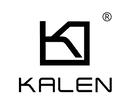
Blog
Bracelet Types: A Professional Guide for Bulk Buyers
Bracelets are among the most versatile product lines in the global jewelry market, projected to grow by 12% annually. Whether you’re sourcing for a major retail chain or an emerging e-commerce brand, bracelet types determine material costs, brand differentiation, and inventory strategies. Below is a detailed overview of the key types of braclets that matter for B2B buyers, including design specifics, cost considerations, and growth potential.
1. Essential Types of Metal Bracelets
When reviewing types of metal bracelets, buyers often consider stainless steel, sterling silver, and brass for their bulk orders. Each metal brings unique pros and cons:
| Metal | Pros | Cons | Common Uses |
|---|---|---|---|
| Stainless Steel | Corrosion-resistant, hypoallergenic | More difficult to bend for complex shapes | Modern, industrial designs |
| Sterling Silver | Premium appearance, easily molded | Prone to tarnish, higher base cost | Luxury, high-fashion pieces |
| Brass | Budget-friendly, easy to engrave | May cause skin discoloration if uncoated | Fashion-focused or seasonal lines |
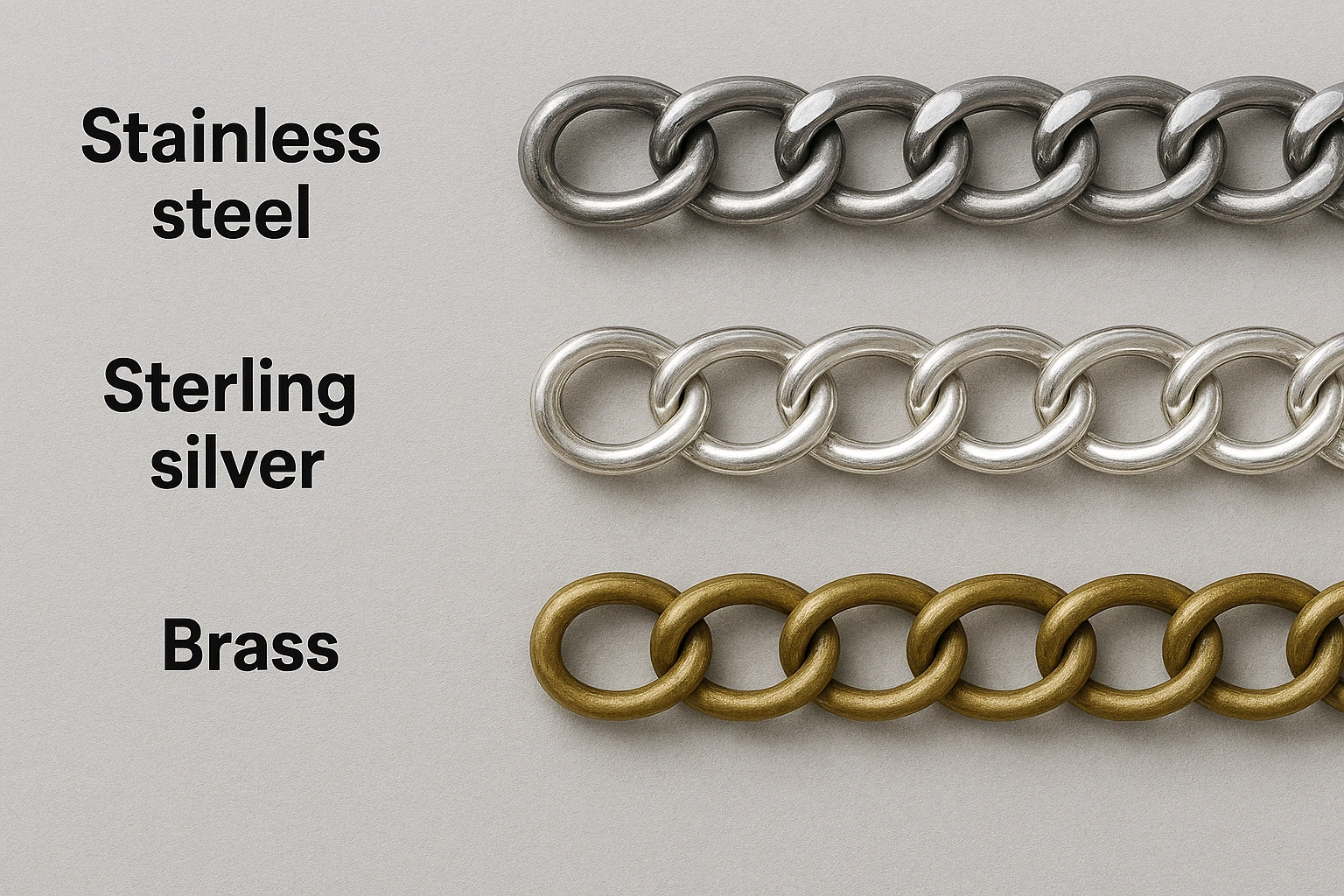
Stainless Steel
Kalen’s top-selling metal is stainless steel, given its durability and consistent finish. High-grade 316L stainless steel typically has a lower return rate of 3.5%—a considerable advantage over brass or plated alloys.
Sterling Silver
Luxury brands prefer sterling silver for its warm glow, though costs can spike with fluctuating silver prices. B2B clients who prioritize premium aesthetics often stock select sterling silver lines to elevate their collections.
Brass
Fashion retailers favor brass for short-term trends. It’s cost-effective for large runs, but braclet types made from brass may require protective coatings to avoid tarnish or skin reactions.
2. Key Bracelet Types (and Their B2B Advantages)
1. Cuff Bracelets
- Rigid, open-ended design.
- Suitable for quick on/off wearing and minimal sizing issues.
- Ideal for flash sales or limited-edition drops since fewer sizes reduce inventory overhead.
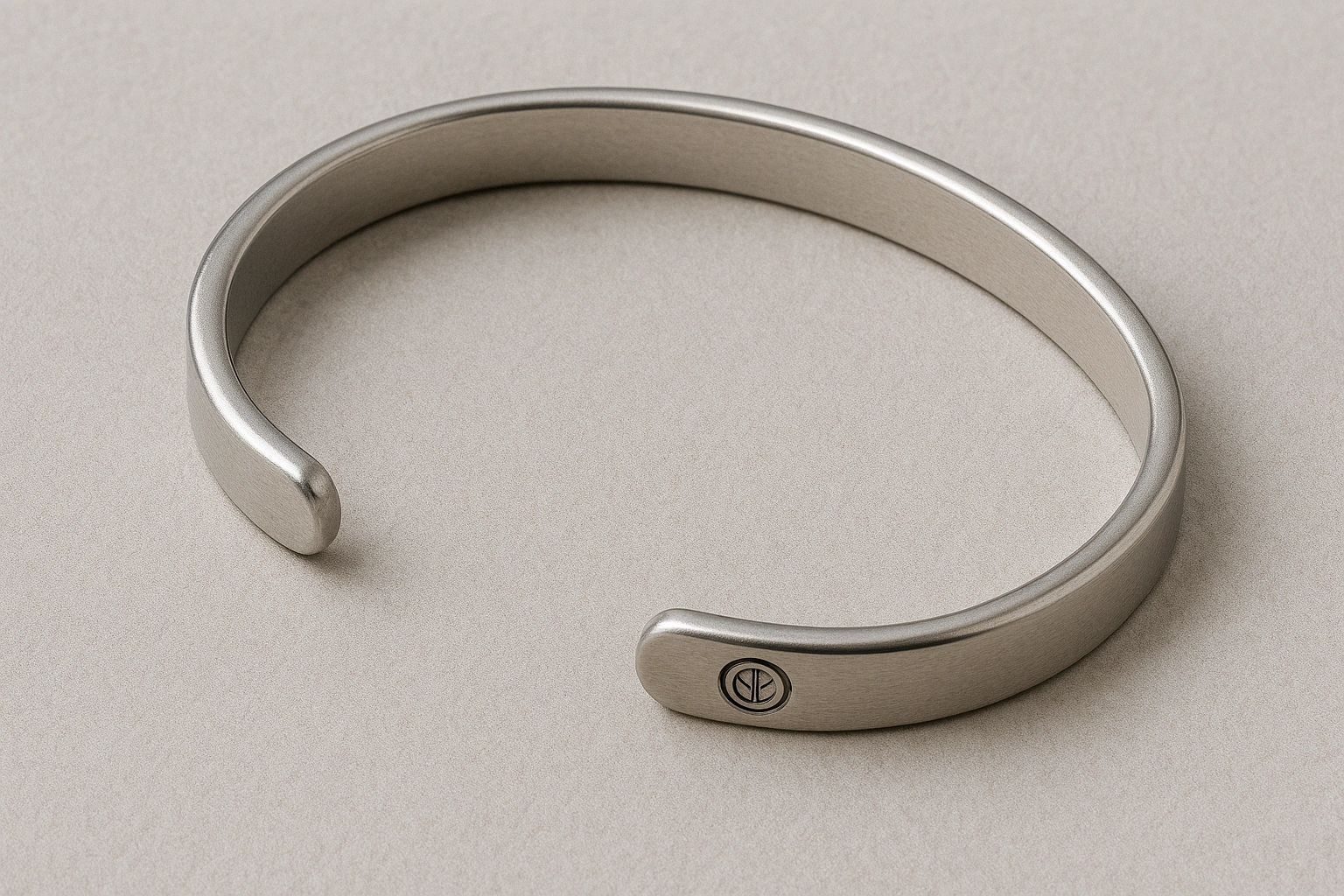
2. Chain Bracelets
- Classic, versatile choice with different chain styles (cuban, cable, rolo, etc.).
- Easy to adapt lengths or add charms—useful for segmented product lines.
- Consistent bestsellers, with stable demand across diverse demographics.
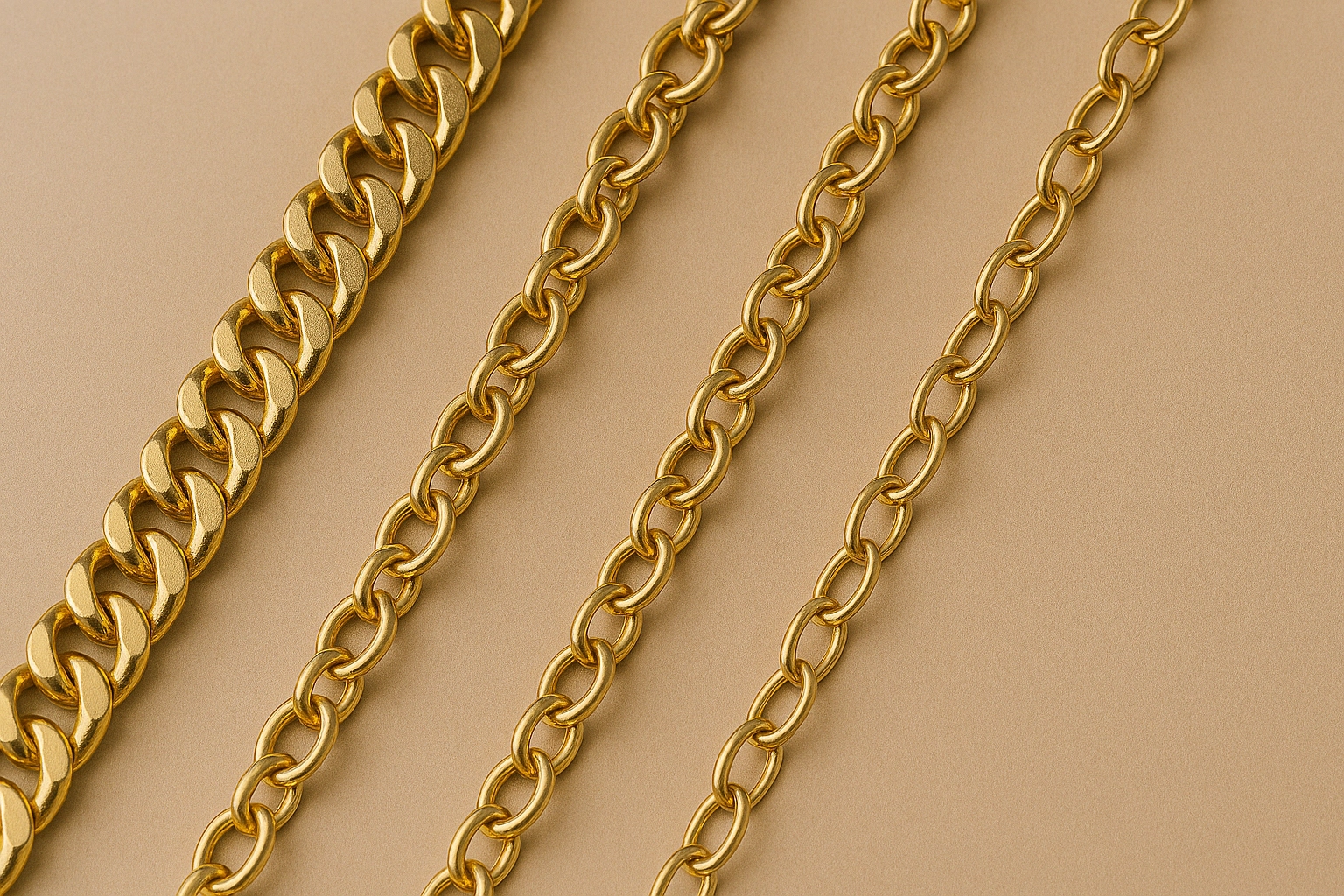
3. Charms Bracelet
- Offer personalization and up-selling potential.
- B2B tip: Stock a wide array of interchangeable charms for recurring revenue.
- Commonly paired with stainless steel bases to ensure durability.
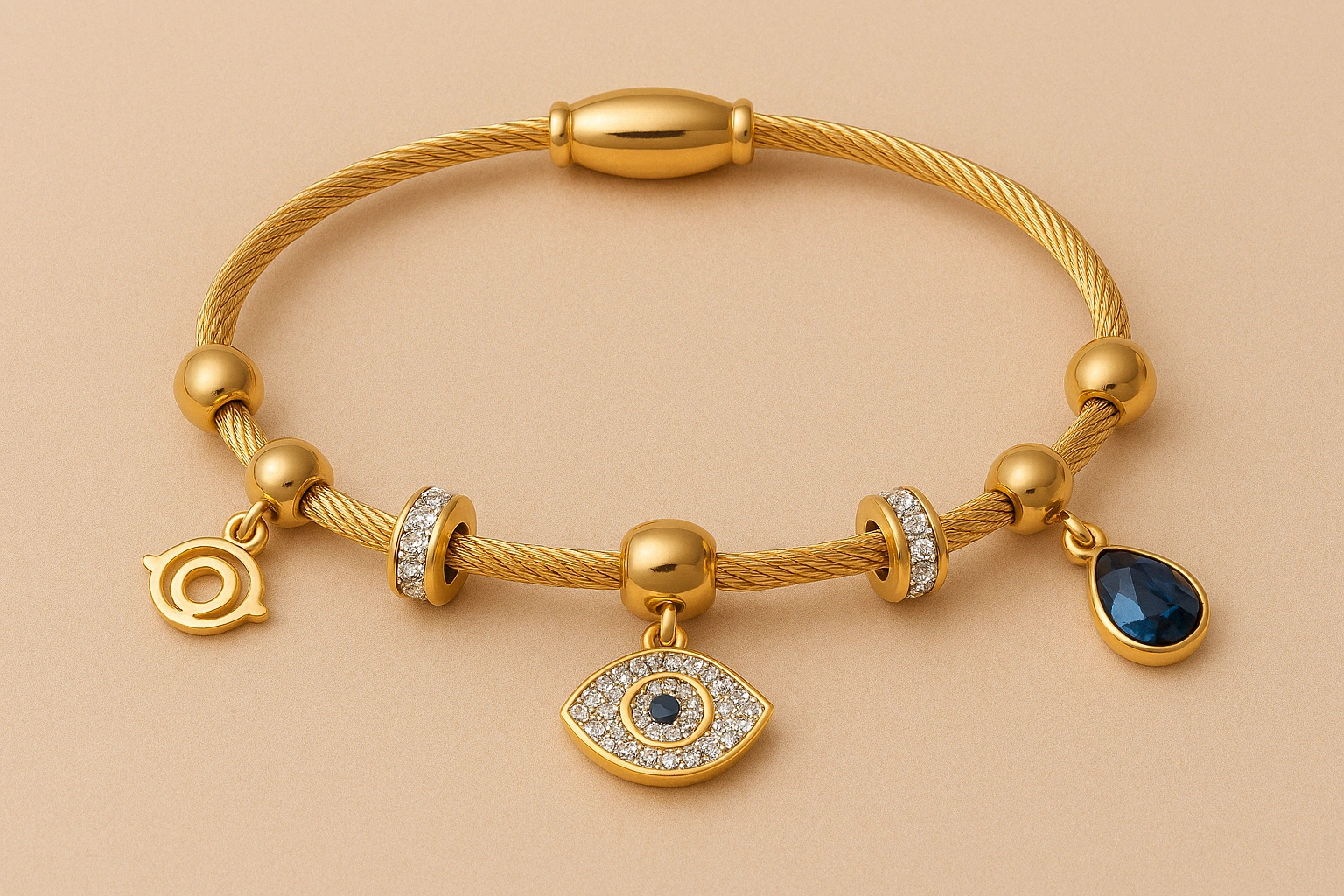
4. Bangle Bracelets
- Circular, slip-on style typically requiring more accurate sizing.
- Lends a sleek, minimalist look popular among modern and contemporary lines.
- Great for larger volumes if sizing is standardized for target markets.
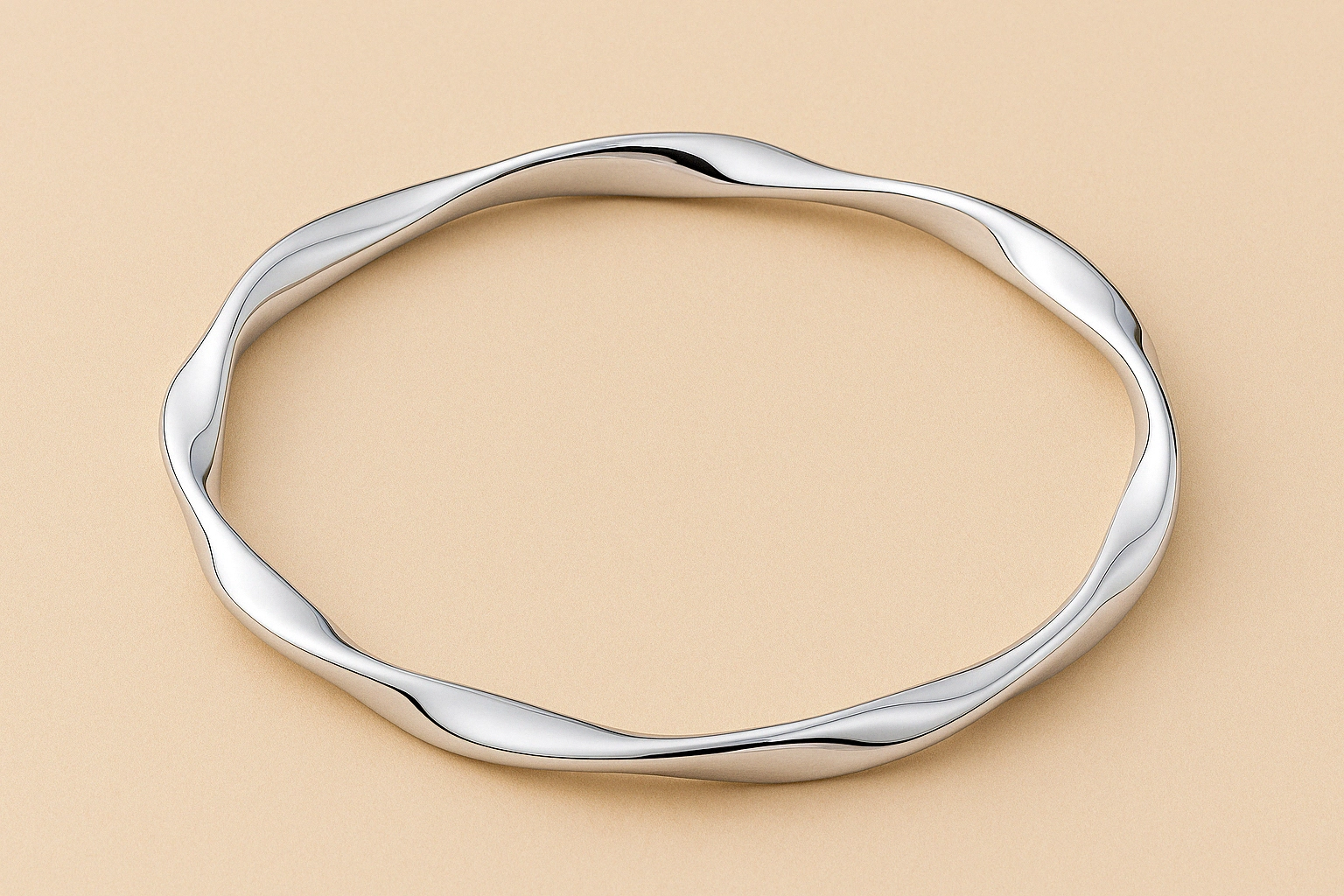
5. Wrap Bracelets
- Multi-layer style that often features mixed materials (leather, beads, metal).
- Appeals to boho or festival markets seeking casual, layered looks.
- Good for cross-selling with coordinating bohemian necklaces and anklets.
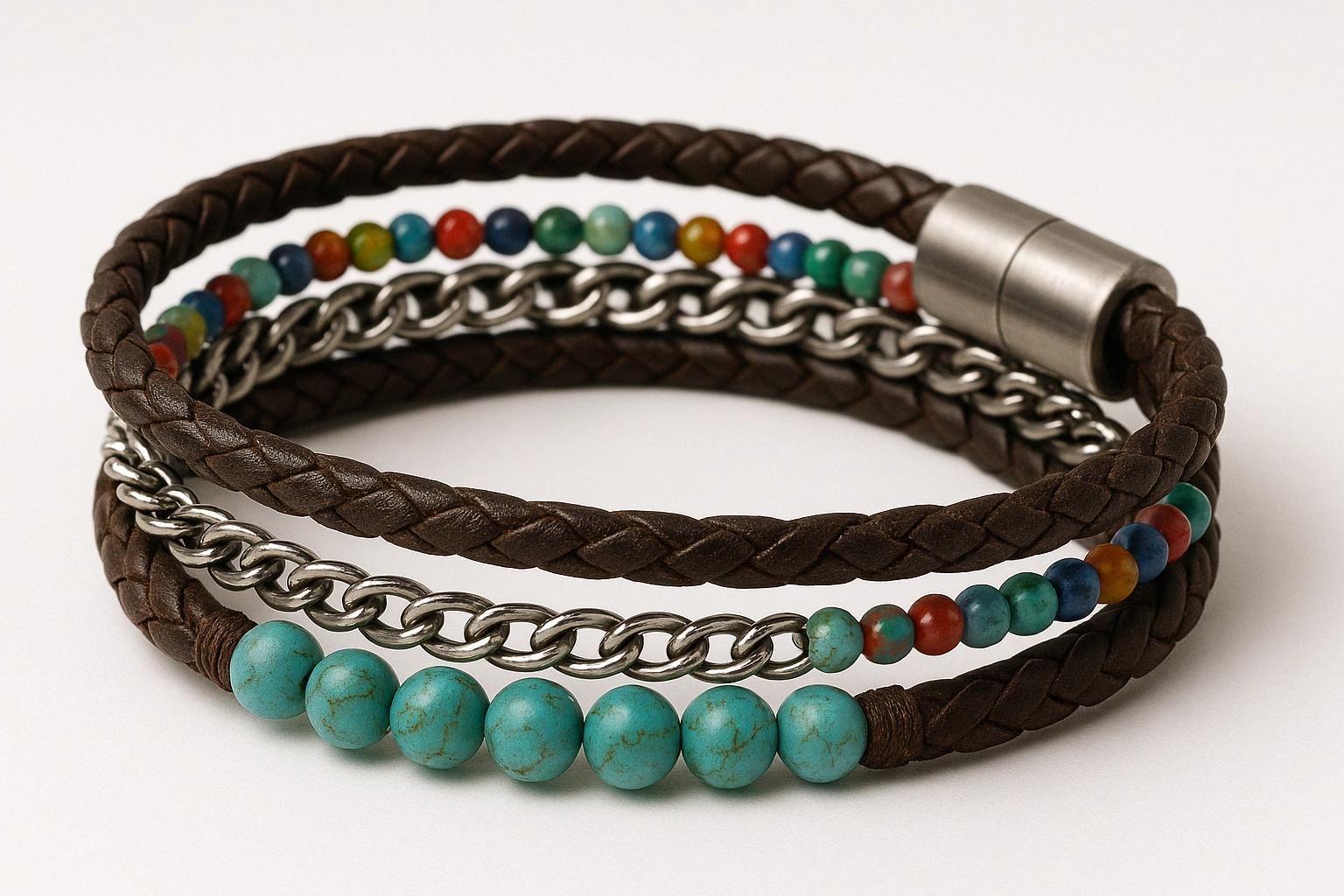
3. Design Innovations and Trends
To stand out in a crowded market, incorporate trending design elements:
- Mixed Metals: Combining silver and gold tones in one bracelet lowers your SKU count yet appeals to broader tastes.
- Minimalist Geometry: Simple lines and shapes—popular in Europe, especially among younger consumers.
- Sustainability Focus: Use recycled metals or eco-friendly plating processes to win over environmentally conscious buyers.
4. Reducing Production Costs and Lead Times
- Bulk Metal Procurement: Sourcing large amounts of stainless steel or brass can reduce per-unit costs by 15–20%. Kalen often consolidates orders to pass savings to our B2B partners.
- Modular Designs: Designing bracelets with interchangeable components can simplify assembly. This approach is especially useful for chain bracelets and charm bracelets.
- Automated Polishing: Modern finishing methods shorten lead times and ensure uniform finishes, critical for big orders headed to major retailers.
5. Common Pitfalls in Bracelet Sourcing
-
Ignoring Regional Preferences
- Some markets prefer chunkier metal pieces, others favor dainty chains.
- Overlooking these nuances can result in higher return rates or unsold inventory.
-
Insufficient Quality Checks
- Weak clasps or flawed plating lead to customer dissatisfaction.
- A thorough QC process that tests for plating thickness, nickel release, and clasp durability reduces returns.
-
Lack of OEM/ODM Flexibility
- B2B buyers need custom logos, brand-labeled tags, or design modifications.
- Finding a manufacturer with robust OEM/ODM services ensures faster product rollouts.
6. Future Outlook for Bracelet Types
Given the global push toward personalization, growth in e-commerce, and a rising demand for accessible luxury, the market for different types of metal bracelets looks strong. We foresee a 10–12% annual growth rate in the chain and cuff categories alone. Hybrid materials (like wood or resin combined with stainless steel) are also emerging, catering to niche consumer tastes.
Conclusion
For B2B buyers, understanding bracelet types[^1] goes beyond mere style trends. Material choice, production strategies, and design flexibility all shape inventory turnover and profit margins. Whether you focus on types of braclets for luxury lines or broad-appeal minimalistic options, selecting the right braclet types and types of metal bracelets can boost brand reputation and customer loyalty. Through extensive OEM/ODM capabilities and global standards compliance, Kalen can help tailor your bracelet offerings to meet specific market demands.
Footnote
[1]: This resource will provide insights into the best metal options for bracelets, helping you make informed purchasing decisions.
